Holiday 2010 System Builder's Guide
by AnandTech Staff, edited by Jarred Walton on November 19, 2010 2:00 AM EST- Posted in
- Guides
- Systems
- Holiday 2010
| Brian's Intel Dream PC | ||
| Hardware | Component | Price |
| Processor |
2x Intel Xeon X5660 Westmere 32nm (Hex-core + HTT, 2.8 to 3.2 GHz, 12MB L3, 95W) |
2x $1225 |
| CPU HSF | 2x Xigmatek Dark Knight-S1283V | 2x $45 |
| Motherboard |
EVGA Classified SR-2 (Intel 5520, ICH10R, 270-WS-W555-A2) |
$590 |
| GPU | 2x EVGA SuperClocked GTX 580 | 2x $530 |
| Hard Drives | 4x Western Digital 1.5TB (WD1501FASS) | 4x $120 |
| OS Drive (SSD) | OCZ RevoDrive X2 240GB PCI-E 4x SSD | $680 |
| Memory | 2x Patriot 12GB (3x4GB) DDR3 1333 | 2x $360 |
| Power Supply | Antec TPQ-1200 80 Plus Silver | $250 |
| Case | Lian Li PC-V2120X ATX Full Tower | $500 |
| Optical Drive | LG 10x Blu-Ray Burner w/Lightscribe | $100 |
| Keyboard | Das Keyboard Professional Model S Silent | $135 |
| Alt Keyboard | Logitech G510 Keyboard | $100 |
| Mouse | Razer Mamba 5600 DPI Wired/Wireless | $130 |
| Monitor | Dell U3011 30" 2560x1600 IPS | $1350 |
| Sound Card | Creative 7.1 24-bit PCI-E X-Fi Titanium | $75 |
| Total System Price | $8610 | |
When I heard that the whole AnandTech staff was going to get to put together a rig of their choice, I instantly gravitated to the super high end. Heck, there's no reason you can't at least ask for the absolute best, even if you know it's out of your price range. For others, maybe you really do want to go sky high and push the limits of what's possible with desktop parts without getting too exotic. Either way, this dream machine build isn't for the faint of heart.
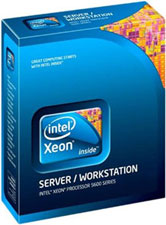
I've configured and built a number of dual processor Xeon 56xx series workstations in the past, yet each time destined for a fairly mundane existence doing computational modeling or some other serious business. Each time I'm finished, there's a brief but overwhelming temptation to install Crysis, Metro 2033—heck, something!—with all the eye candy on max with a 2560x1600 display. Each time, I shake that thought away right after finishing burn-in testing as I pop in the latest version of whatever *nix flavor is appropriate. I kid myself that maybe eventually I'll be able to build something like this without having to justify every bit of it as being vitally critical for modeling complicated scientific something or other. Anyway, if you've got nearly limitless piles of sweet cash lying around, this is the rig for you.
Starting out is really the motherboard. Initially, I wanted to go with a server-class motherboard, the SupermicroMBD-X8DTi, having worked with it and similar workstation boards in the past. If you want a dual CPU motherboard, the options basically dictate either a similar class of "server" motherboard like theMBD-X8DTi from Supermicro, something comparable from Tyan, or the only choice in the more conventional desktop class of products, the EVGA Classified SR-2. TheMBD-X8DTi and SR-2 are actually quite similar; both are built around the Intel 5520 and ICH10R chipsets, both are happy with an unreasonable number of triple 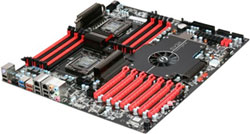 channel ECC or non-ECC DDR3-1333 memory, and both actually present similar PCI-E lane configurations. The Supermicro comes with onboard graphics, but we'd obviously recommend disabling that in the BIOS and forgetting about it. The Supermicro board costs $430, whereas the Classified SR-2 costs a slightly mind-bending $590. The difference between the two is ultimately whether you want SLI licensing so you can stick in some some multi-GPU goodness from NVIDIA. Remember that NVIDIA still requires either a BIOS key or NVIDIA bridge chip for SLI to work, both of which the cheaper Supermicro board lacks. AMD CrossFire remains feasible on both, but that difference, along with the more enthusiast-oriented features like overclocking support, ultimately led me to settle on the SR-2, despite its nose-bleed-inducing price tag.
channel ECC or non-ECC DDR3-1333 memory, and both actually present similar PCI-E lane configurations. The Supermicro comes with onboard graphics, but we'd obviously recommend disabling that in the BIOS and forgetting about it. The Supermicro board costs $430, whereas the Classified SR-2 costs a slightly mind-bending $590. The difference between the two is ultimately whether you want SLI licensing so you can stick in some some multi-GPU goodness from NVIDIA. Remember that NVIDIA still requires either a BIOS key or NVIDIA bridge chip for SLI to work, both of which the cheaper Supermicro board lacks. AMD CrossFire remains feasible on both, but that difference, along with the more enthusiast-oriented features like overclocking support, ultimately led me to settle on the SR-2, despite its nose-bleed-inducing price tag.
Of course, now that we've incurred such a large price premium to get a two-socket motherboard, we should stick in at least a couple hex-core CPUs, right? Two 6-core CPUs with Hyper-Threading gives a whopping 24 threads of power. For that, there's Intel Westmere—the SR-2 andMBX-X8DTi both support Xeon 5500 and 5600 series. At the most extreme, there's the 3.33GHz Xeon 5680, which runs $1725, but anyone can sort by price and see what's the most expensive, and we're still at least somewhat interested in performance per buck (or are we?) The Xeon 5680 can Turbo from 3.33GHz to 3.6GHz. Subjectively, the Xeon X5660 seems to be a better tradeoff between price and stock clock speed at 2.8GHz, plus you get a larger turbo boost up to 3.2GHz. Either way, the two CPUs will set you back a big chunk of change. As one reader pointed out, you also need a heatsink for Xeon, as it doesn't ship with one, so we grabbed a couple of Xigmatek Dark-Knight coolers.
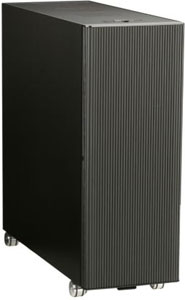
In the traditional workstation configuration, I usually opt for a Cooler Master Cosmos or Cosmos S, and when I think about what's really ultimate in the case market these days, my mind immediately settles on either the iconic Thermaltake Level 10 or the ABS Canyon 695. TheMBD-X8DTi and other workstation boards are E-ATX, which would fit in all the aforementioned cases but the Level 10. Unfortunately, the SR-2 is enormous and necessitated EVGA to define their own motherboard form factor entirely—HPTX—which is a mind-numbing 13.6" x 15". The result is that our case recommendation is limited unless you're willing to go custom or break out the Dremel. Luckily, there's a line of HPTX cases by Lian Li that are attractive and fit the SR-2 just fine. If you're opposed to finding a motherboard tray properly machined for HPTX or loath to do modifications yourself, the Lian Li PC-V2120X is what you should go for.
Moving along we come to the GPUs; I talked with Ryan on this to get his input, and ultimately we both agreed on 2xSLI GTX 580s. EVGA is (at time of this writing) offering the Superclocked version at 797MHz core/1594MHz shader clocks for prices on par with the competition's regularly clocked GTX 580s. The choice is simple at that point: go for the factory overclocked EVGA while it's still feasible.
Storage on a dream build would be incomplete without an SSD for the OS. Thankfully, the RevoDrive X2 is indeed bootable and thus makes an ideal drive for the OS and critical system apps. On every system I've built in recent memory, I've gone with an SSD + RAID array of slow but capacious storage; I think the same is best here. Get four or five 1.5TB or higher HDDs of whatever brand makes you feel warmest inside, toss them in a RAID5 set, and enjoy a crap-ton of storage that's fully redundant. I suppose if you're really feeling ultimate, you could get a RAID card instead of using the ICH10R's software fakeRAID, but it probably isn't critical unless you want to eek out everything you can from those mechanical drives.
My dream PC would be incomplete without at least 12GB of RAM—it's just that simple. I think it's safe to say that 6GB is pretty standard for midrange X58 gaming builds, with 8GB and 12GB starting to become the norm at the fringes. To stay safely ahead, you've got to move to 24GB, which is actually surprisingly common for workstations processing huge datasets that need to exist entirely in RAM. Of course, it's more than likely that no game will ever make use of the 24GB, but we're building the ultimate system here, right? The objective is to play Crysis within Crysis if we could. I settled on two sets of matched Patriot 12GB (3x4GB) kits, as all the 24GB (3x8GB) kits I could find were either sold out or lacked heat spreaders. You should still get triple-channel performance on either the SupermicroMBD-X8DTi or EVGA SR-2 with six populated memory slots, but it definitely makes me a little uneasy populating so many if you don't have lots of airflow.
For the power supply, we're big fans of the Antec TPQ-1200 Silver, which packs a half and half modular/fixed set of cables. It's a combination that provides the best of both worlds for not blocking airflow with unused power cables, and fixed cables for being absolutely certain connectors aren't a concern. The TPQ-1200 is (as the name implies) 1200W, which should be adequate for the SR-2, two Xeons, and two GTX 580s, plus all those mechanical drives.
I'm a fan of LG's 10x Blu-ray burner with LightScribe support, purely because it's SATA, well received, and I've built a number of systems with it in the past. You get DVD+/-R support at 16x, and CDR support at 48x, which is pretty standard. I'm a sucker for LightScribe support just because I always convince myself that the next batch of writeable disks I buy will also be LightScribe; sadly, I've somehow avoided ever doing it. Regardless, the optical drive is quickly becoming marginalized, but for your ultimate build, why not include one? Same thing with the sound card—you don't really need one anymore if onboard audio suffices, but if we're going for the ultimate, you might as well consider it.
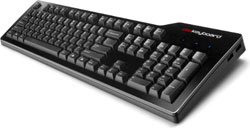
Since we're going all out, we'd be remiss if we didn't include suggestions for the peripherals as well. When I think of the ultimate keyboard, I immediately think of one keyboard—the Das Keyboard. If you haven't heard of it, chances are you've been living under a rock, or been blind sighted by all the flashy gaming-focused keyboards with copious amounts of LED lights but little attention to the mechanics of keydomes. If you want a gaming keyboard, get the Logitech G510—it's awesome and I have one—but if you're serious about typing, consider the Das Keyboard. Das Keyboard is essentially the modern IBM model M equivalent, and is a joy to type on purely because of the serious mechanical and aural feedback. For the mouse, I'm a huge fan of Razer. I worked my way from the Logitech MX1000 (the first laser mouse) through a number of Logitech and Razer mice alike, but keep settling back down on Razer. It's ultimately a matter of personal taste.
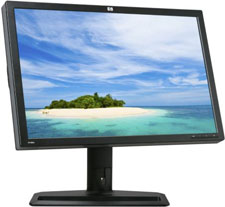
Last but certainly not least is the monitor. The choices here are quite obvious: either buy a 30" Dell U3011 or its archrival, the HP ZR30w. Both are IPS, both look superb, and both round out the dream configuration. Or maybe you need two 30-inchers? I've left out a fan recommendation since the stock fans for these Xeons have (thus far) seemed sufficient, but the usual Zalman 120mm or similar are always an option I'd encourage.
This configuration is again insane, but at the end of it all, I still find myself thoroughly convinced that if I had infinite monies, I'd put it together in a heartbeat—and maybe even splurge for that 3.33GHz Xeon 5680, regardless of the fact that it's overkill even for Crysis. If you had infinite cash or an appetite for the drooling-on-the-carpet insane—and need it right stinkin' now—this is the system I'd recommend, right after I note that Sandy Bridge is right around the corner. If this configuration is financially justifiable to you, by all means, do it! (And send us some benchmarks and pictures!) Alas, for me, it's still little more than a holiday dream.










112 Comments
View All Comments
SteelCity1981 - Friday, November 19, 2010 - link
I honestly don't care if I have the latest tech. the way I look at it new tech comes out every 6 months to a year anyhow. I get tech that suits my needs not what's out there. I'm one of those people that wait until the current tech gets replaced by the latest tech which ends up pushing the last gen tech down in price.I'll prob be looking at a first gen AM3 system or a LGA 1156 system early next year to replace my aging S939 system I currently have now. By then a lot of the processors and sockets for those systems should see a nice price drop from where they are now.
mapesdhs - Friday, November 19, 2010 - link
A small note on budget systems one might build for friends, etc.
(especially those without the tech knowledge). I built a PC for my
neighbour & his family back in May; decided to see what I could do re
mixing 2nd-hand 'professional' parts and consumer tech, try to make
something with a bit of quality. I found a mbd/CPU/gfx/RAM combo for
135 UKP (ASUS M2N-BM-DVI, Athlon64 X2 6000+, OCZ 2GB DDR2/800, ASUS ORB
8800GT PCIe), LSI 21320-IS SCSI card for 5, U320 SCSI 73GB 15000rpm
Fujitsu MAX3073NC and cable/adapter for 15 (knocks the socks off SATA
for access time), and a company was offering a new Coolermaster
Centurion Plus 534 case half-price for 25. The rest I bought new: 500GB
SATA Samsung F1 for 40 (as it was back then), CiT 700W PSU for 30,
Wireless 54Mbit PCI card for 7 and DVDRW for 18. Total: 275 UKP
The main idea was to have a fast & responsive system disk, but with a
normal SATA for data, so it feels very nippy but still has decent
storage. The resulting setup ran very nicely (and the mbd combo came
with Stalker, complete/boxed. :)
http://service.futuremark.com/compare?3dm06=138917...
For a display though, I recommended they buy new, something decent,
which they did for 138 (LG W2254TQ-PF 22" 1680x1050, 2ms, 300 cdm/2,
1000:1). Same cost today gets 1920x1080.
They do a lot of surfing, so the fast system disk really helps.
Just thought I'd mention for those who like to be a bit adventurous...
(the landscape of what is available has changed since then, but the
same concepts still apply)
Ian.
PS. Access time speed ref (the Fujitsu beats a WD VR 10K):
http://www.sgidepot.co.uk/diskdata.html#ACCESS
precarious - Saturday, November 20, 2010 - link
"never mind the old single-core Athlon 64 3800+ running in my daughter's computer!"does she really need more than that to download recipes and msds sheets for the latest household cleaning products?
JarredWalton - Saturday, November 20, 2010 - link
FYI, my daughter turns eight tomorrow. LOL It's more like Noggin.com for her.ManjyomeThunder - Saturday, November 20, 2010 - link
I see that you mention the Das in your ultimate-uber-badass dream gaming rig. And that's perfectly fine, it's a great keyboard, but I thought I'd take a second to clarify a few things.1) The link specified is for the "Silent" model of the Das Keyboard, which uses non-clicky, tactile Cherry MX Brown switches. While these keyboards do provide tactile feedback just like, say, the Model M, the majority of any sound produced is from "bottoming out" the keys. The normal Das keyboard uses Cherry MX Blue switches, which are tactile and clicky, and produce a more distinct sound like the Model M, only much more high pitched.
2) The Das Keyboard is far from being the "modern Model M". If anything, the direct equivalent of the Model M would be the Customizer 101, manufactured by Unicomp in Lexington, Kentucky. They own the rights to the patents and such on the Model M, and produce nearly identical keyboards for an affordable price. I'm typing on a black Customizer 104 now, which costs a fair bit less than the Das keyboard. There are also somewhat smaller models such as the "SpaceSaver" available. Make sure to pick up a model that uses "buckling spring" switches (most of theirs do), because that's what makes it mechanical and clicky.
3) In addition to Unicomp, there are a large number of mechanical keyboards, including Razer's new BlackWidow, the Deck Legends, Filco Majestouches and Steelseries 7G. There are a lot of different switches, each with their own unique properties, so it's best to look into these things before you buy them. A good place to start would be over at GeekHack. We're all keyboard nerds there.
raghu1111 - Saturday, November 20, 2010 - link
I would like to know estimated idle power consumption for AMD and i3 budget systems. Dell 580s with i3 550 lists idle power at 40 watts.. which is very good.My use case : this is an always on computer running ubuntu. I don't plan to put it in sleep mode and hence the sensitivity to power consumption. I have been using a laptop as desktop for this reason so far.
JarredWalton - Saturday, November 20, 2010 - link
Here's Anand's figures from Bench for two similar setups:http://www.anandtech.com/bench/Product/122?vs=143
Note that those both have a 5870 GPU, so you can knock off around 10-15W if you go with IGP or a low-end GPU. I figure an Intel i3-550 setup can probably get down to around 40W idle power draw for the entire system, depending on components, where an Athlon II X4 will end up 10-15W higher. Running 24/7 you're looking at a power bill difference of around $10-$15 per year in most places, so it's nothing major -- though if you were doing something like a Folding@Home PC I think the difference might be more like 35-40W at load.
raghu1111 - Saturday, November 20, 2010 - link
Thanks Jarred. The page lists 66 W at idle. IGP should be good enough to start with for me. I can disconnect DVD drive (may be just a couple of watts). May be I am looking at best case of 50 W.Out of Box Experience - Saturday, November 20, 2010 - link
I want a tablet PC that can control a REAL computer in realtime, with compressed graphics sent wirelessly from my tower to the tablet at FULL frame rates.It needs wireless usb3 for sending data and controlling the tower with bidirectional throughput (USB2 is a one way street)
I also want a mini-ITX tower with a built in KVM switch and a power supply that can handle 2 or more motherboards
I want hard drives that have a read only switch (like SDHC cards) so I can backup ALL my stuff without worrying about viruses & worms
I want mini-itx motherboards with built in digital audio amps (Low powered for mobility)
and while I'm dreaming, lets make XP-Pro open source so we can fix it properly and add SSD support!
and I want it all by Christmas
Thanx Santa
raghu1111 - Saturday, November 20, 2010 - link
What would be the idle power consumption for i3 550 based budget system. would AMD based much different. Dell lists Inspiron i3 550 based 580s at 40 Watt, which is pretty good.My use case : always-on Ubuntu desktop. not planning to set it to sleep mode. 3D graphics performance is a not an issue.
Thanks.